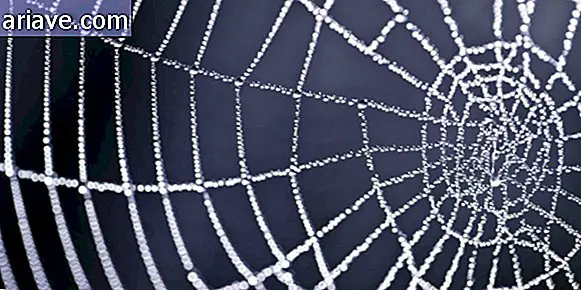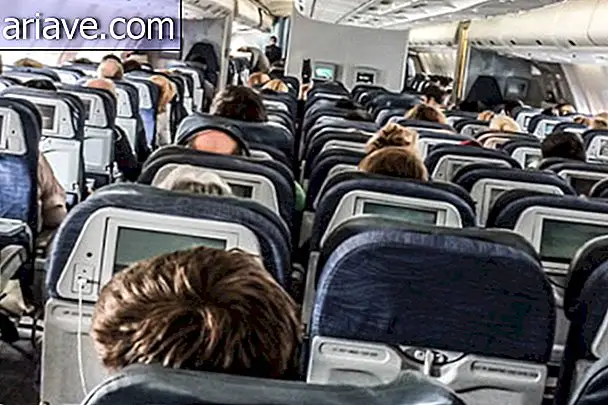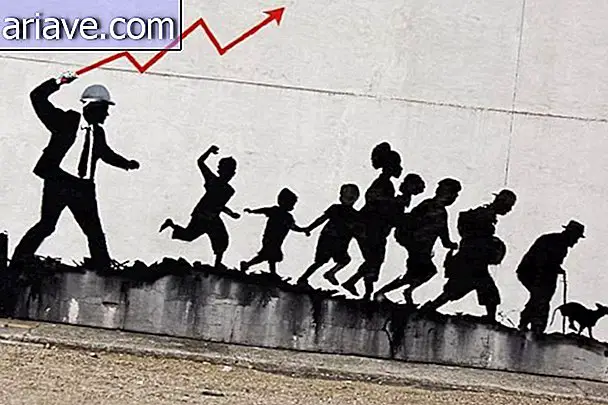10 Facts You May Not Know About Caffeine
Fun animation showed us how impressive the coffee production and consumption figures are. An example of this is the estimated annual consumption that reaches the mark of 12 thousand tons of grain. That way, it's hard for you not to drink at least one cup of coffee a week. But even if we eat the various caffeine-containing drinks and foods on a daily basis, do we really know about this substance?
Caffeine is known to have a direct effect on the central nervous system, making us more alert. In moderate doses, the substance can bring a number of benefits to the body, including improved memory and concentration, as well as aids in overall mental health. Coffee - which, due to its high consumption, is one of the main sources of caffeine - has been associated with a reduced risk of Alzheimer's and some cancers.
Conversely, excessive amounts of caffeine can increase heart rate, cause insomnia, anxiety and other side effects. Among those who consume the substance regularly, lack of stimulant can result in headaches and irritability.
So, to let you know more about caffeine, the Huffington Post has created a list of 10 lesser known facts about one of the most consumed substances in the world. Check out!
1. Decaffeinated, Caffeine-Free Products Are Not the Same
Don't be fooled by the packaging: Decaf products may contain caffeine. A study published in the Journal of Analytical Toxicology looked at nine different types of decaffeinated coffees and found that eight of them had caffeine. The amount ranged from 8.6 mg to 13.9 mg, and a traditional cup of coffee has between 95 mg and 200 mg of the substance.
“If a person drinks between 5 and 10 cups of decaf, the caffeine dose can easily reach the same level as in one or two cups of traditional coffee. This can be a concern for people who need to eliminate caffeine intake, such as those with kidney disease or anxiety problems, ”warns University of Florida professor Bruce Goldberger.

2. Caffeine takes effect within minutes
If you need a little forceps to get a job done or hold on for a few more hours, the good news is that caffeine has an almost immediate effect on the body. According to the American Academy of Sleep Medicine, the substance reaches its peak in the blood 30 to 60 minutes after ingestion. There is also a study that points out that alertness can arise in just 10 minutes.
It usually takes 3 to 5 hours for the body to eliminate half of the substance and it takes between 8 and 14 hours for the body to be completely caffeine free. Sleep experts recommend abstaining from coffee for at least eight hours before bed to avoid discomfort during sleep. Of course, the effects may vary and are usually more visible in people who don't drink caffeine regularly.
3. The effects are not the same on everyone.
The human body processes caffeine in different ways. Thus, factors such as gender, race and contraceptive use can influence the effect of the substance on the body.
According to the New York Magazine, women metabolize caffeine faster than men. Still for them, the use of birth control pills can reduce this speed to 1/3 compared to women who do not use the method. For smokers, the process happens twice as fast as non-smokers. Asians also tend to react more quickly to caffeine than other populations.
To illustrate this fact, writers Bennett Alan Weinberg and Bonnie K. Bealer raise in the book "In The World of Caffeine: The Science and Culture of the World's Most Popular Drug" the hypothesis that a non-smoking Japanese who drank his coffee accompanied by an alcoholic beverage (which helps to prolong the action of caffeine) would feel the effects of the substance for a period five times longer than an English woman who smoked but did not drink alcohol or use oral contraceptives.

4. Energy drinks don't contain more caffeine than coffee
Strange as it may seem, drinking energy will not keep you more alert or more awake than a cup of coffee. Something has made us believe that those small cans contain large amounts of caffeine, but that's not true.
The Mayo Clinic portal reports that a 250 mL can of Red Bull can contain between 76 and 80 mg of caffeine, while a good old cup of coffee (240 mL) can range between 95 mg and 200 mg. The difference is that the energy drink contains some sugars (sucrose and glucose), plus taurine and other substances that can stimulate the nervous system. But if you are in doubt, probably a dose of coffee will have everything you need.
5. Dark coffees have less caffeine than light ones
Just as we believed that energy drinks would be able to do more for our income than coffee, something led us to believe that darker coffees would have more caffeine than light ones. However, while dark roast coffees are strong, full-bodied and more palatable, this does not mean that they are richer in caffeine than light roast coffees.
According to the NPR website, this is because the roasting process burns some of the caffeine, making dark coffees the best option for those who want to enjoy the drink without feeling the effects of caffeine with such intensity.

6. Caffeine can be found in over 60 plants.
Far beyond coffee beans, caffeine is present in a number of foods. Teas, cola nuts and cocoa are some of them. The stimulant can also be naturally found in leaves, seeds and fruits of different origins. If necessary, caffeine can also be synthetically produced to be added to industrialized products.
7. Not all coffees have the same amount of caffeine
Recent research published in the Huffington Post has shown that the amount of caffeine varies considerably by brand. To collect numbers, the coffees served in major American restaurant chains were analyzed.
In a brief comparison, a 30 mL dose of McDonald's had 9.1 mg of caffeine, while a sample of the same amount obtained from Starbucks contained 20.6 mg of the substance, more than double.

8. An American consumes an average of 200 mg of caffeine per day.
According to the US Food Control Agency (FDA), 80% of American adults ingest caffeine daily, with an individual intake of about 200 mg. In real terms, this means taking 2 cups (150 mL) of coffee or 4 cans of soda every day.
These data reveal that Americans have a moderate consumption of the drink, which is between 200 mg and 300 mg of stimulant per day. Over this limit, consumption is considered heavy (between 500 mg and 600 mg) and can have side effects.
9. Finland is caffeine-intensive country
Although the numbers found among Americans are impressive, it is the Finns who are ranked first in the ranking of countries that consume the most caffeine. According to a recent BBC report, an average adult consumes 400 mg of caffeine daily in Finland.

10. Caffeine is not just in drinks
A survey by the FDA points out that 98% of caffeine consumption is through drinks. However, they are not the only source of the stimulant, as some foods - such as chocolate - and medicines may contain the substance.
The Cleveland Clinic website reveals that mixing a pain reliever with caffeine makes the drug 40 times more effective and makes the body absorb the medication faster.
* Originally posted on 08/29/2013 .
***
Do you know the Mega Curioso newsletter? Weekly, we produce exclusive content for lovers of the biggest curiosities and bizarres of this big world! Register your email and do not miss this way to keep in touch!











